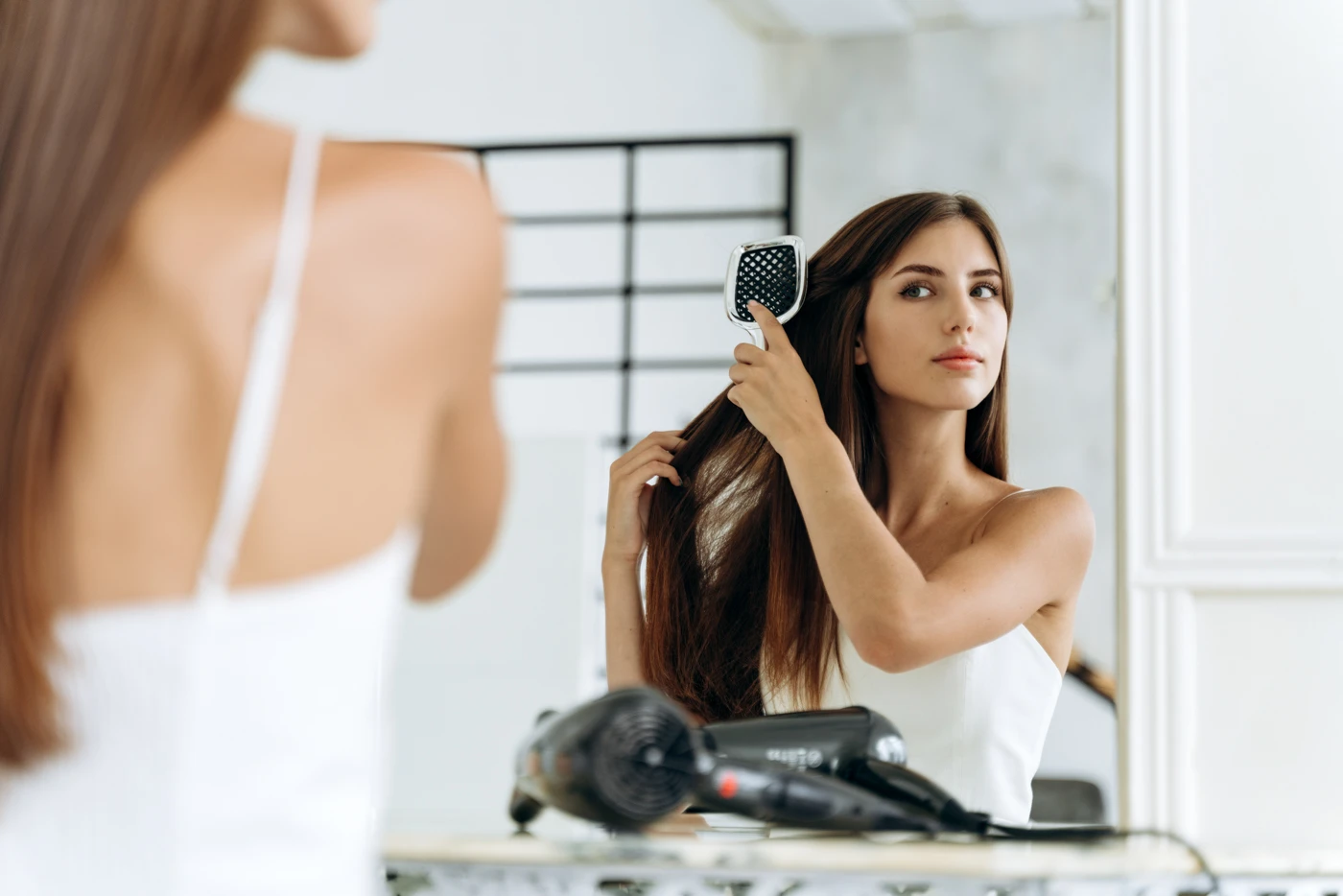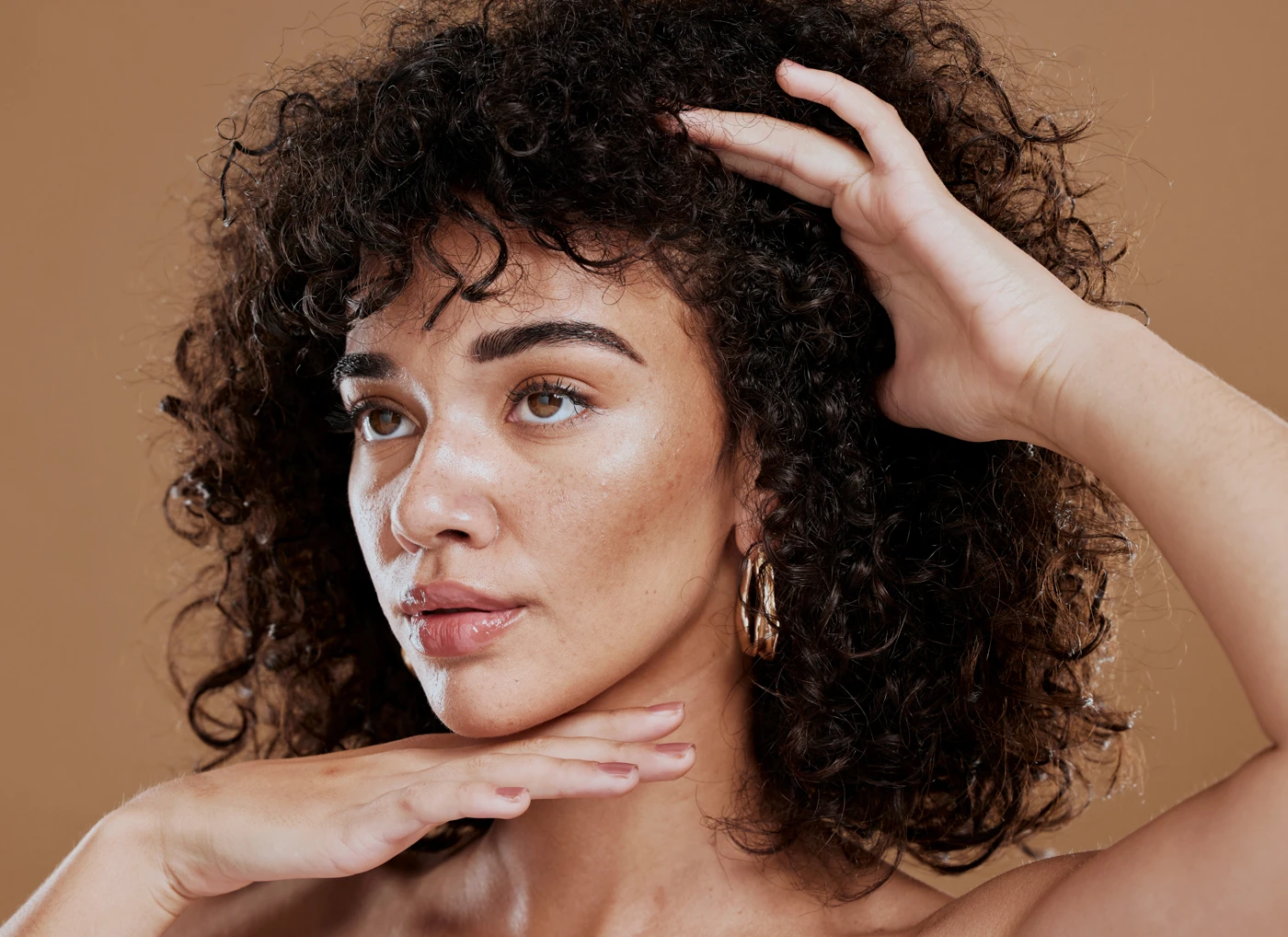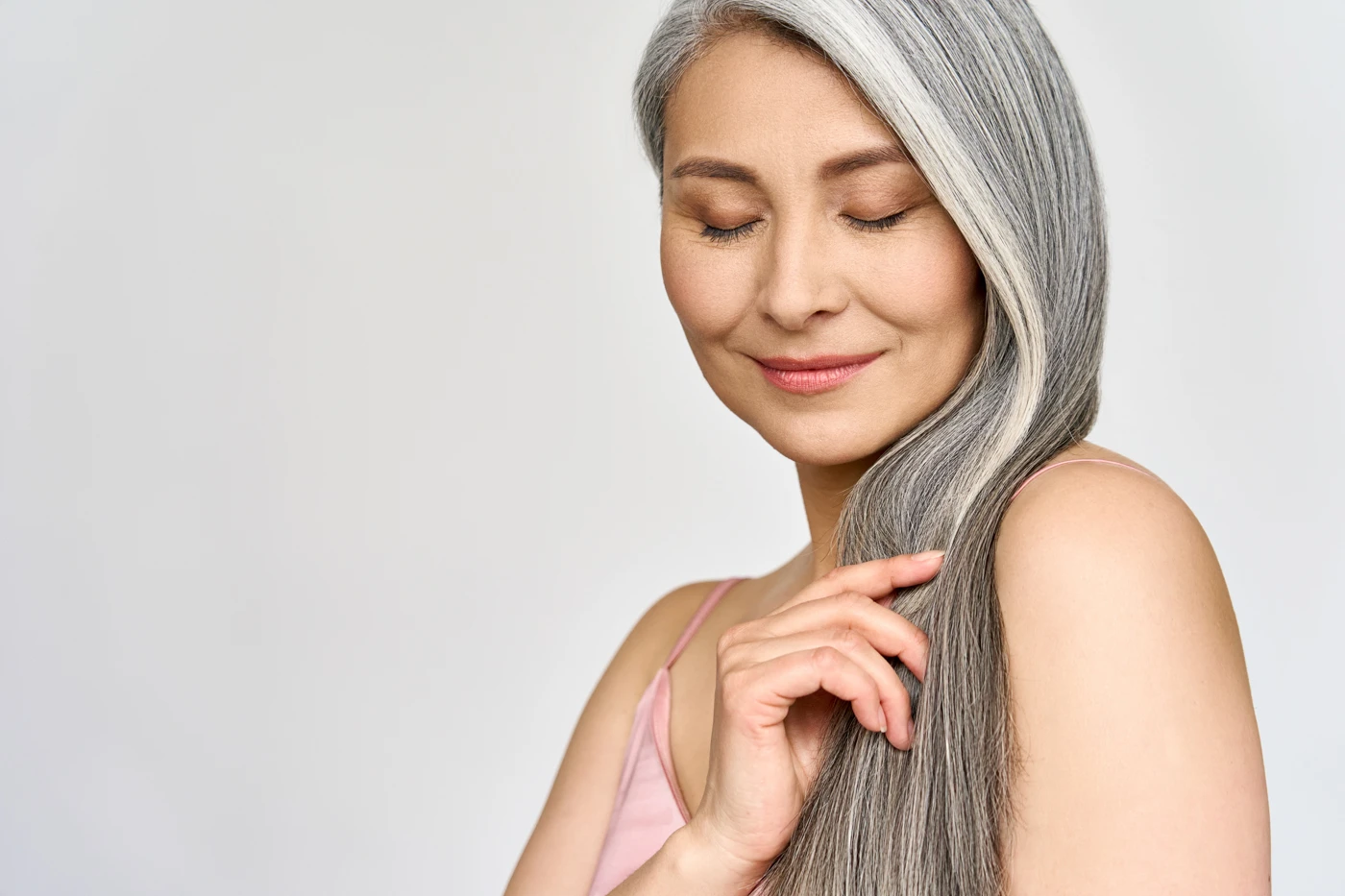Taking care of your hair’s health at home is the key to keeping it shiny and hydrated, even when you’re away from the salon.
The good news? You don’t need to make a great effort to achieve healthy hair. With a few smart choices and consistent care, your locks can look stunning every day.

Taking Care of Your Hair’s Health is Taking Care of Yourself
The appearance of our hair is closely linked to our emotions. Have you ever felt that, no matter how hard you tried, your hair just wasn’t having a good day? It wasn’t just your imagination! When we don’t feel good, nothing seems to look right, including our hair.
On the other hand, who hasn’t left the salon feeling renewed, confident, almost powerful? The transformation goes far beyond the visual; it’s a true boost to your self-esteem.
Your hair reflects who you are and what you want to communicate to the world. And you don’t need magic to maintain that shine. With simple care at home, you can prolong that salon effect you love so much. After all, taking care of your hair is also a way of taking care of yourself.
It’s not just about aesthetics; it’s something transformative. When you give your appearance a boost, you also boost your self-esteem.
It’s worth the investment, isn’t it?! So, what are you waiting for to give the attention it truly deserves?
Check out these expert tips to achieve healthy hair with the best hair care routine at home for all hair types.

Say Hello to Professional Hair Care Products
Having salon-worthy hair doesn’t need to be a fairytale. You don’t need to wait for a fairy godmother only to have everything fade away at midnight, nor should you settle for lifeless hair.
There’s no need to wait for miracles or accept dull, lifeless hair. The beauty industry offers an abundance of products that can be your allies in the quest for healthy locks. Start by identifying your hair type and its needs. From hydrating masks to heat protectants and repairing oils, there’s a solution for every hair type and every issue.

The Power of Quality Hair Products
There are tools and products to make your daily routine easier. Identify your hair type, its needs, and what can be your main allies. These could include hydrating masks, heat protectants, repairing oils, and the right shampoo and conditioner.

Giving New Hair Products a Try
You may have seen positive testimonials about a certain product that didn’t work for you.
Every hair type reacts differently, so investigate the causes with your hairdresser or check if the root of the problem is related to other issues such as diet, stress, the effects of medication, hormonal changes, or others.
Want to delve deeper into the possible causes of hair loss? Find out more here: “Why Is My Hair Falling Out? Causes Of Hair Loss In Women”.

How to Keep Your Hair Healthy at Home with the Best Hair Care Routine
1. Keep Your Hair Always Hydrated!
Consider the famous phrase: “drink water, stay hydrated,” and apply it to your hair as well. Keeping your hair hydrated is simpler than you might think; just choose a product that suits your hair type and needs. Additionally, commit to taking the time to follow the instructions.

How Often Should I Use a Hydrating Hair Mask?
Usually, once a week, depending on your needs. Your hair will show signs when it’s lacking shine, movement, and feels dry. A hydrating mask will replenish the essential nutrients, restoring your hair’s beauty.
Consistency in this care routine is recommended to prevent damage to your hair. Your hairdresser can suggest the right products for you. Take the opportunity to ask about the correct application as well.
What’s The Best Way To Moisturise My Hair?
By coating each strand of hair individually, following all the instructions on the product’s packaging. Be careful not to overuse it.
Remember: hydration is beneficial, but be cautious not to overdo it. Even damaged and dry hair doesn’t need to be hydrated every day. Excessive hydration can leave your hair heavy and dull.

How Do I Determine If My Hair Needs More Hydration?
Your hair will need more hydration when it suffers from damage caused by chemical treatments or the effects of summer. In these cases, the frequency of hydration can increase, but it should never be done every day.
Ideally, you should allow a minimum interval of one week between treatments. Normal and oily hair can wait even longer.

2. Choose The Right Shampoo For Your Hair Type
Whenever you buy hair products, keep your hair type and specific needs in mind. Even if a brand is reputable, it might have the opposite effect if it’s not suited to your hair.
Which Shampoo Brands Are The Most Recommended By Hair Professionals?
3. How Should I Correctly Apply Shampoo?
Apply shampoo to the roots, massage the scalp, and let it gently run down the length of your hair.
Important: Don’t rub the strands!
Also, use a reparative oil as an ally to realign your hair!
4. Wash The Scalp
Don’t forget to properly wash your scalp with shampoo. Just because we don’t apply conditioner, creams, or oils to this part of the head doesn’t mean we should neglect it! Additionally, it’s recommended to exfoliate your scalp once a week.

5. Don’t Sleep With Wet Hair Or Tied Up
Have you ever noticed the disastrous results in the morning? Additionally, wet hair can lead to the proliferation of fungi and bacteria.
Don’t tie your hair with rubber bands or while it’s still wet, as this can pull on the scalp, causing tangles that can break and damage the strands.
How To Stop Frizzy Hair
- Use a silk scarf or cap while you sleep or incorporate it into your look to help control frizz.
- Swap your cotton pillowcase for a silk one – silk protects the hair cuticle by minimising friction between the hair and the fabric.
- Use a microfiber towel to dry your hair. They help maintain shine and reduce frizz.
- Avoid rubbing your hair with the towel, as the friction can break the strands.
- Brush your hair before showering. Doing so helps distribute the natural oils from your scalp to the ends of your hair, reducing the likelihood of breakage.
6. Does Hot Water Damage Hair?
Hot water during a shower opens the hair cuticles, leaving your hair looking drier. Cooler water helps combat dryness and maintain shine. Rinse your hair with lukewarm or cold water whenever possible. Also, consider using a shower filter.
7. How to Protect Hair From Heat Damage?
When exposed to the sun, use a hair sunscreen with SPF or wear a hat to protect your hair—yes, that advice from our mums when we were kids has never been more relevant! And always apply a heat protector before using any styling tools.
If your hair still suffers damage due to overexposure, apply a hydrating mask.
8. Keep in Mind that Chemically Treated Hair Requires More Care
If your hair is coloured, it will be more prone to frizz, dullness, thinning, dryness, breakage, and other issues. Therefore, you’ll need to take greater care than someone with natural hair. Your salon visits will also be more frequent.
Intensify the care mentioned above and read our full article on how to look after coloured hair.

9. Have a Balanced Diet
Yes, your hair will reflect your nutritional choices, so try to include the necessary amount of protein in your diet. Focus particularly on foods rich in vitamins C and E.

10. Use Heat Tools Wisely
I say it again and again: first and foremost, use a heat protector. It creates a physical barrier for your hair, making it more resistant to heat, and you’ll also notice a more polished finish when styling.
The product is usually applied to damp hair, but it can also be used on dry hair.
Don’t Use Curling Irons Or Flat Irons On Wet Hair
Please, don’t fry your hair!
Choose a straightener or styling tool that is entirely ceramic, rather than just having a ceramic coating. Tools with this technology ensure that your hair is styled more quickly with even heat distribution. You won’t need to pass the device over your hair multiple times to achieve the desired result.
Use professional tools with ionic technology, which will add moisture to your hair as you style.
How to Use The Hair Dryer Correctly
Use the hairdryer from a distance of 30 cm, and try to let your hair dry as much as possible before using it, with cooler temperatures. Keep the hair dryer away from your hair.
Be careful not to burn your scalp or make your hair too greasy. Excessive heat can stimulate sebum production and may make your hair more fragile.

If your hair has suffered from excessive damage due to overuse of heat sources, look for reparative products. For example, a reparative oil can treat split ends and even serve as a thermal protector.
11. Trim The Ends of Your Hair
Cut your hair every 3 months! Waiting too long between cuts can lead to split and dry ends, making your hair more brittle and affecting its growth.

12. Don’t Wait too Long to Seek Help
Your hair doesn’t stay the same; it grows and changes naturally or through interventions. Despite your daily care, you’ll need to visit the hair salon.
Your hairdresser knows you well and will always be there to help. If you have questions about hair products, what to do in specific situations, or what your hair type is, don’t hesitate to ask them.

With all these tips, you’re more than ready to care for your hair at home and maintain that salon shine for much longer. And when you need a little extra help, you know you can count on a visit to the salon to give your look a boost.
Want to see these tips in action? Get in touch with us and book your appointment. We’d love to take care of you!



